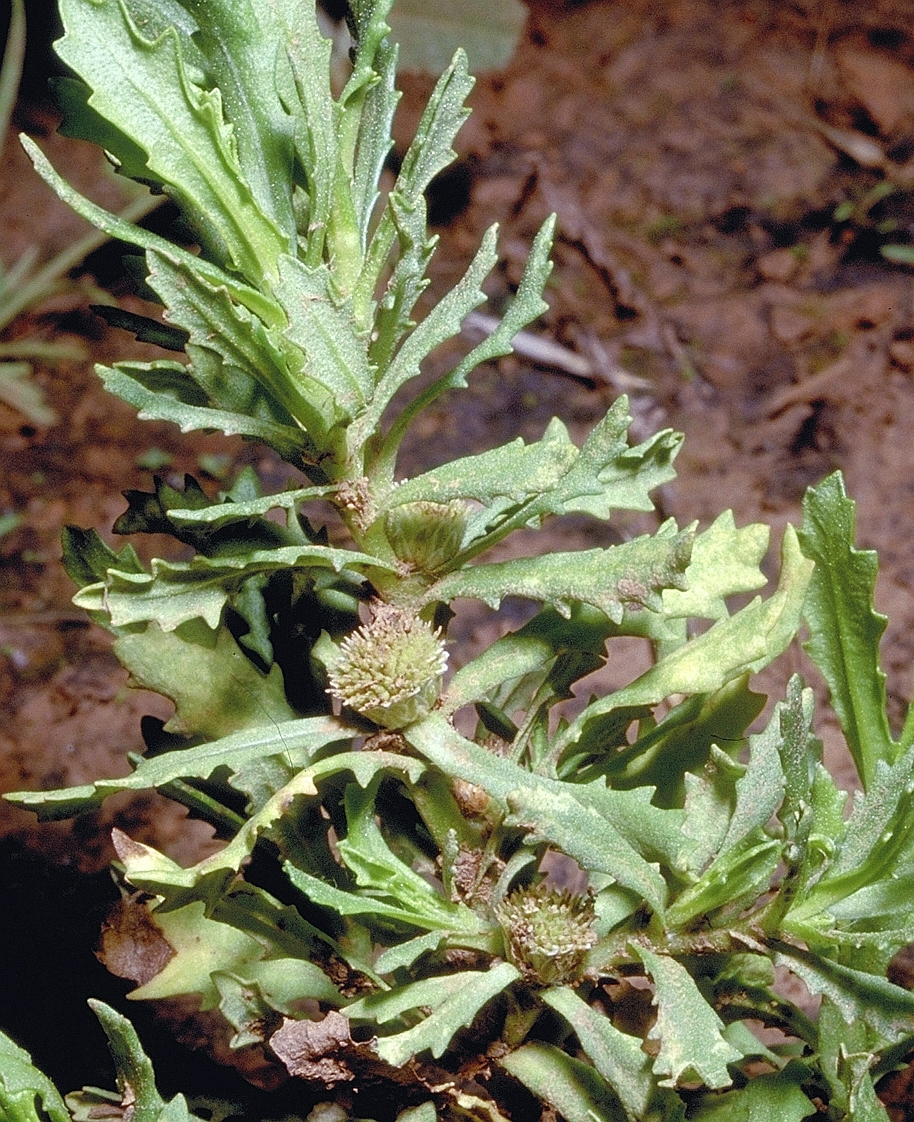Centipeda thespidioides
F.Muell. Desert SneezeweedAscending to erect annual to c. 20 cm high, usualy cottony in upper axils. Leaves c. oblong 4–22 mm long, 2–6(–8) mm wide, serrate, glabrous, resin dotted. Capitula sessile, cup-shaped to broadly campanulate, flat-topped, 3–5(–6.5) mm diam.; involucral bracts ovate to obovate, entire or with minutely ruminate membranous margins, 2–5 mm long; receptacle slightly concave or flat; female florets c. 40–80(–120) corollas 0.6–0.8 mm long; bisexual florets (3–)10–18(–25) corollas c. 0.8 mm long. Fruiting heads remaining intact until after stems senesce. Cypselas linear, 2.2–3.3 mm long with antrorse hairs in two rings (one at the base and one at the point of fusion of the ribs into the apical portion) and vesicular hairs lacking or very sparse; ribs 8–16, about half of these more prominent than others, scabridulous; apex obtuse or truncate extending as a spongy apical portion a third of the cypsela length. Flowers most of the year.
LoM, MuM, VRiv, MSB, RobP, MuF. Also WA, NT, SA, Qld, NSW. On heavy clay soils prone to inundation in depressions surrounded by halophytic shrublands in regions surrounding the Murray River from Kerang through to South Australia with an isolated occurrence near the Grampians.
Walsh, N.G. (1999). Centipeda. In: Walsh, N.G.; Entwisle, T.J., Flora of Victoria Vol. 4, Cornaceae to Asteraceae, pp. 720–723. Inkata Press, Melbourne.
 Spinning
Spinning



